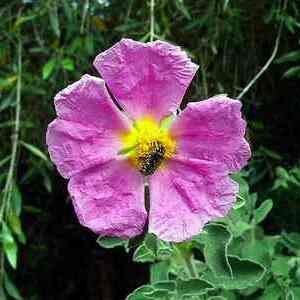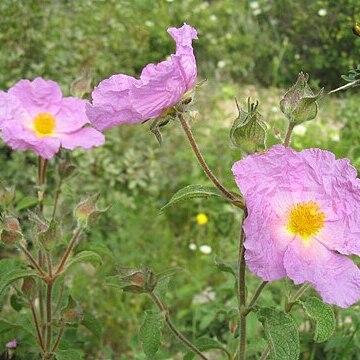Herbs, subshrubs, or shrubs. Leaves usually opposite, rarely alternate, stipulate or estipulate; leaf blade simple. Inflorescence 1-flowered or cymose, sometimes racemelike or paniclelike. Flowers bisexual, actinomorphic. Sepals 5; outer 2 smaller, sometimes absent. Petals (3 or)5, white, pink, yellow, or orange, sometimes with ± black blotches at base, crumpled in bud, caducous. Stamens many; filaments free, unequal in length, inserted in elongated or discoid torus; anthers 2-thecate, longitudinally dehiscent. Gynoecium of 3-5(-10) carpels; ovary superior, 1-loculed or imperfectly 3-5-loculed; placentas parietal; ovules 2 to many, orthotropous, rarely anatropous; style 1; stigmas 3. Capsule leathery or woody, loculicidal. Seeds small, often angled and coarse on surface. Embryo often curved, or circinate; cotyledons narrow; endosperm powdery or cartilaginous.
Small shrubs with simple and stellate indumentum. Leaves simple, opposite. Flowers bisexual, almost actinomorphic, in cymes or solitary. Sepals 5, free, unequal. Petals 5, free, convolute in bud, caducous. Stamens numerous, on a hypogynous disc; anthers versatile, bilocular, opening by slits. Ovary superior, 1-locular, 3–10–carpellate; placentation parietal, usually intruding into ovary; ovules several, orthotropous; style simple. Fruit a loculicidal capsule. Seeds with endosperm; embryo curved.


